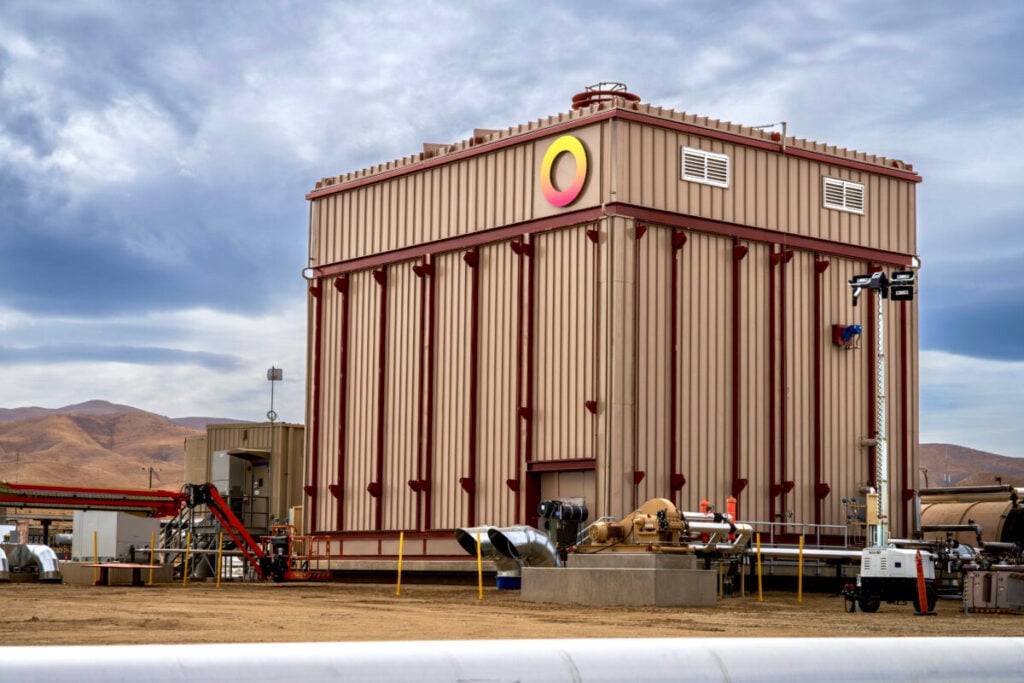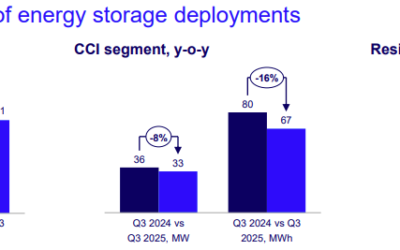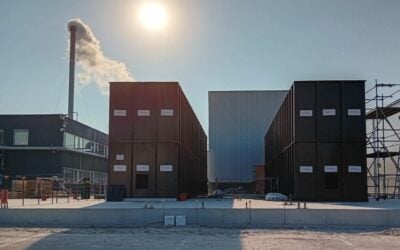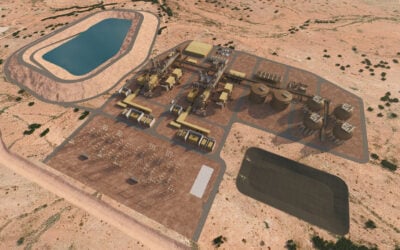
What is claimed to be the world’s largest industrial thermal energy storage ‘heat battery’ has gone into operation in California, US.
Technology provider Rondo Energy said last week (16 October) that it had begun commercial operation of its 100MWh Rondo Heat Battery (RHB) system at an industrial facility operated by Holmes Western Oil Corporation.
Much like rival thermal energy storage (TES) startup Kyoto Group’s 56MWh industrial system that went online recently in Hungary, Europe, the system is designed to reduce gas consumption for the client.
The RHB is charged directly from an onsite solar PV array. Rondo claims it achieves round-trip efficiency (RTE) above 97%, stores heat at over 1000°C and enables 24-hour continuous heat.
Try Premium for just $1
- Full premium access for the first month at only $1
- Converts to an annual rate after 30 days unless cancelled
- Cancel anytime during the trial period
Premium Benefits
- Expert industry analysis and interviews
- Digital access to PV Tech Power journal
- Exclusive event discounts
Or get the full Premium subscription right away
Or continue reading this article for free
At the oil corporation plant, the TES system is delivering steam alongside the existing gas boilers and Rondo claimed the installation process was achieved without any disruption to ongoing production or processes.
In addition to reducing emissions from the plant, reducing the use of gas as fuel and replacing it with fixed-cost solar PV also mitigates energy cost volatility.
In the first of a four-step charge and discharge cycle, electric power is used to warm up Joule heaters. Thermal radiation from the electric heaters then heats refractory bricks to as high as 1500°C, storing the heat for hours or even days.
Air then flows through the brick stack, to be superheated to over 1000°C, with heat delivery rate adjusted by changing air flow and delivered at the desired temperature using Rondo’s proprietary automated AI controls.
Heat can be released for use, while the air is recycled back through the system to minimise heat loss. In the final step, the heat is delivered as superheated air or steam.
TES firms target decarbonisation opportunities for hard-to-abate industrial emissions
Nearly half of global emissions come from heat processes, and about half of that from industrial heating. In a 2022 report, the Long Duration Energy Storage Council (LDES Council) trade association said that TES has the potential to save US$540 billion in energy and system costs a year by 2040 and expand the overall capacity of long-duration energy storage deployments by 2-8TW by that time, versus 1-3TW without.
Industrial heat has long been considered a difficult sector from which to abate emissions due to the need for high-quality, high-temperature heat. Whereas batteries are a relatively simple drop-in replacement for power generation, electrifying heat has proven more tricky.
Kyoto Group’s project announcement from Hungary claimed that it to be the biggest industrial heat battery in the world, which has now already been overtaken just a few days later with Rondo’s.
A handful of other rival startups internationally are also targeting the space, with Australia’s MGA Thermal completing an industrial steam heat demonstration project in April, and US startup Malta Inc.’s Spanish subsidiary signing a deal in June to support the revenue structure of a so-called ‘pumped heat storage’ project with bank BBVA.
Rondo deployed its first 2MWh initial demonstration project in 2023, shortly before announcing that it would target 90GWh annual production capacity of the RHB, albeit on an unspecified timeline.
Later that year, the company raised US$60 million from investors, including Microsoft and Aramco—the latter signing a memorandum of understanding (MoU) with Rondo in May 2024 for a potential gigawatt-scale deployment. Rondo also has deals in place in Europe, signing an agreement with Portugal-headquartered utility EDP to offer heat to industrial customers and then raising €75 million (US$80.5 million) to support three projects on the continent earlier this year.





